How to Eliminate Knee Pain with Tai Chi:
Precise Knee Alignments
In teeing up the topic of chronic knee pain, I know it can seem like a lot of bad news.
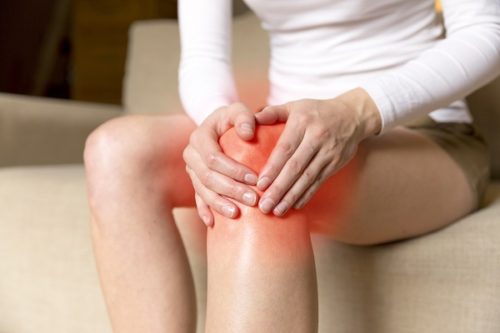
Chronic knee pain slows us down. We give up activities we love. We move less, sit more. Still, our knees hurt.
By far the major cause of chronic knee pain in adults is knee osteoarthritis (Knee OA). Knee OA involves the progressive breakdown of cartilage and other structures in the knee.
The major symptom of Knee OA? Knee Pain. Plus, Knee OA is considered a degenerative disease. Meaning it tends to get worse, not better.
Yes, chronic knee pain can seem like nothing but bad news. But that's not the whole story. There's good news too.
The Good News for People with Knee Pain
Recent scientific research suggests two very promising findings for knee pain sufferers:
⇒ Low-impact exercise is OK for Knee OA. Research shows that low-impact, therapeutic exercise can be safe for those with chronic knee pain. (Note: Get clearance from your medical professional before starting any new exercise program.)
⇒Tai Chi is good for Knee OA. Multiple studies have found that the low-impact exercise of Tai Chi significantly reduces knee pain in people with Knee OA.
So even with Knee OA, it's safe to keep exercising, so long as you do the right kind of low-impact exercise. Tai Chi offers the right kind of low-impact exercise. Plus Tai Chi improves Knee OA symptoms, reducing knee pain.
Promising findings, indeed. (Want to review the research? See the comments section below for a list of citations.)
One Key to Eliminating Knee Pain with Tai Chi:
Knee Alignments
In this article, I share one key to how Tai Chi, when properly taught and practiced, is so effective for transforming knee health.
I call this key: The Two Fundamental Knee Alignments.
As an Exercise Physiologist, I have extensive background in exercise programming and training methods. Unfortunately, precise knee alignments are not part of most exercise instruction or training. Even in some Tai Chi schools.
As a consequence, more and more active adults suffer from knee problems, including knee OA.
It does not have to be that way. With proper instruction and practice, everyone can maintain increasingly precise knee alignments.
With proper knee alignments, you hold the key to unlocking the powerful knee-healing benefits of Tai Chi. For step-by-step instructions on establishing The Two Fundamental Alignments in your knees, read on.
But first, I want to share with you why I'm writing about knee pain and Tai Chi.
Why I'm Writing About Tai Chi and Knee Pain
I've led an active life. Years of contact sports, including collegiate football and competitive martial arts. For decades, I pounded my body with high impact training.
My knees paid for it. Multiple knee injuries, two surgeries. Over time, my knees hurt, more and more. Eventually, doctors diagnosed Knee OA in both knees.
Fast-forward to today. My knees are virtually pain-free.
And, as Head Instructor at Chicago Tai Chi, I’m active. On my feet, leading classes, private sessions, workshops. Often many hours a day. My knees feel healthy and strong.
What caused that transformation? Tai Chi.
I've made it my mission to share the keys to that transformation with other knee pain sufferers.
To that end, I developed and teach the Tai Chi for Knee Health System. Tai Chi for Knee Health distills the knee-specific benefits of Tai Chi into a step-by-step, easy-to-learn exercise program.
(For more about Tai Chi for Knee Health, including the book and the Online Course, see below.)
For background on why the Two Fundamental Alignments are so important for knee health, let's take a quick look at the structure of the knee.
Knee Structure
The knee consists mainly of three bones and lots of soft tissue. Let's start with the bones.
Knee Bones
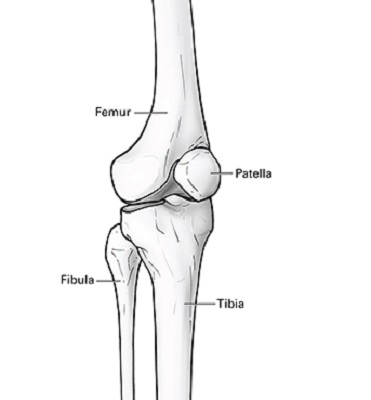
The bones of the knee are:
The femur. The femur is the big thigh bone, the longest bone in the body.
The tibia. The tibia is the shin bone, the second longest bone in the body.
The patella. The patella is the knee cap, the roundish bone in the front of the knee.
These three bones are held together and cushioned with soft tissue, mostly what we call "connective tissue."
Connective Tissue

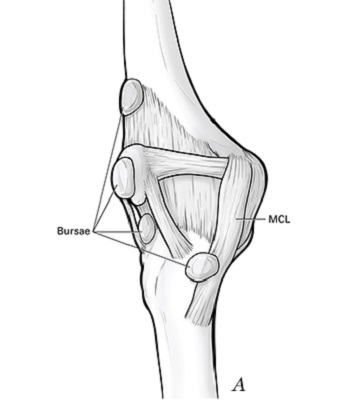
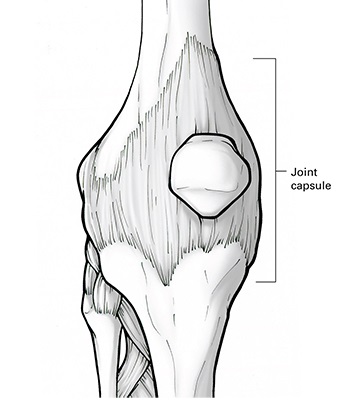
Connective tissue in and around the knee includes cartilage, ligaments, tendons, and the joint capsule, a connective tissue structure that seals, protects, and lubricates the joint.
From there, let’s consider how this structure deals with the forces that go into it.
Knee Structure and Forces
The knee joint is strongest when withstanding vertical forces. For example, when we walk, run, or jump, our body weight sends mainly vertical forces through the knee. When we run or jump, these forces can exceed many times our body weight. The long, strong bones of the femur and the tibia, the wide head of the femur meeting the wide top of the tibia, all evolved to support the force of the weight of the body above.
In this way, a knee functions like the graceful column of a cathedral helping support the immense weight of a lofty ceiling.

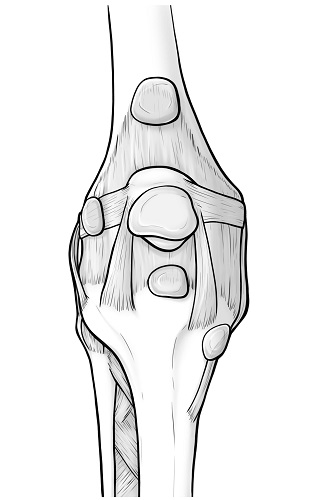
At the same time, the knee is less strong in withstanding lateral forces and twisting forces. Instead of big, strong bones, we have smaller and weaker connective tissues resisting those forces.
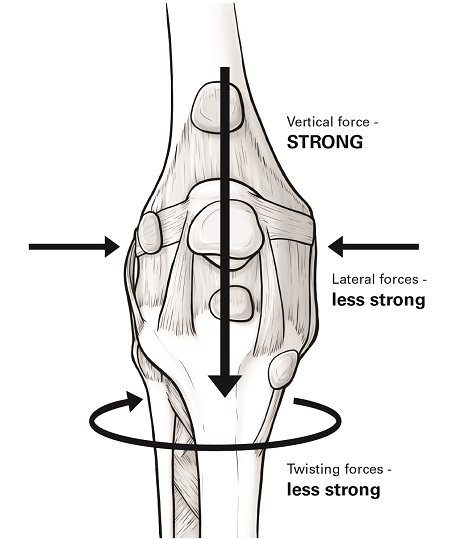
Not surprisingly, most knee injuries result from lateral forces, twisting forces, or both.
Like what occurs all too often in football, when a player collides into the side of another player's leg, collapsing the leg in at the knee. Or in soccer, when a fast-running player plants her foot to make a sudden direction change, and twists the upper body and hips too much, torquing the knee.
Those injuries can damage cartilage, ligaments, tendons, the joint capsule, and, if the forces are large enough, bones.
Similarly, for knees with OA (including mine), lateral forces and twisting forces, even in small amounts, can put pressure into areas of arthritis in the knee. This pressure can increase pain and cause more deterioration.
So how do we prevent lateral forces and twisting forces from going into the knee?
That brings us to the Two Fundamental Knee Alignments.
The Two Fundamental Knee Alignments
The Two Fundamental Knee Alignments provide a key to avoiding lateral forces and twisting forces in your knee. The Two Fundamental Knee Alignments are:
Knee Over Foot
Keeping your knee over your foot means: The center of the knee joint stays approximately over the center of the foot. By maintaining the knee over the foot, you avoid collapsing the knee in or out, and you avoid pushing the knee too far forward or back.
Kneecap Aligned with Toes
Keeping the kneecap aligned with the toes means: The front of the knee is facing the same direction as the foot. By keeping the kneecap aligned with the toes, you avoid twisting the knee in or out.
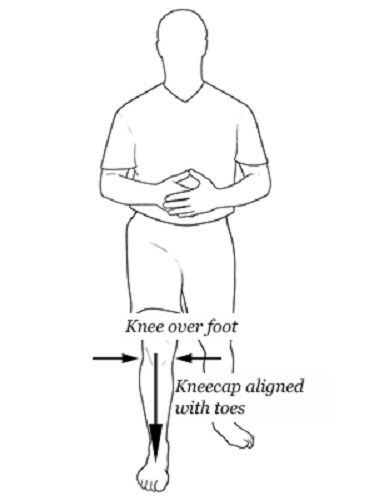
How to Establish the Two Fundamental Knee Alignments
Here's how to get a feel for the Two Fundamental Knee Alignments while standing:
1. Stand Comfortably. To get started, stand comfortably. Adjust your posture so that your weight is evenly distributed between your feet. Keep your knees unlocked. You want your knees to feel slightly soft, not tense and locked.
2. Feel your Knees. Next, get your mind in your knees. Really feel them. Feel the sensations your nervous system makes available. These sensations include the pressures inside your knees, and the positions of your knees in the relation to other parts of your body.
3. Make Small Adjustments. Next, make small adjustments to align your knees. Stabilize each knee over the same-side foot. Feel what that feels like in each knee. Align your knee cap with the same-side toes. Feel what that feels like in each knee.
4. Check Visually, Correct. You can check your knee alignments in a mirror or have a partner check. Correct as necessary to get your knee over the foot and kneecap aligned with the toes on both knees.
With practice, you'll get the hang of establishing your knee alignments while standing. You will feel when your knee is over your foot and when it is not. You will feel when your kneecap is aligned with your toes and when it is not. You will correct as necessary. Eventually, this can become almost automatic. With that, you will be off to a solid start in transforming your knee health.
This sounds straightforward. But for most people, there are two big problems with maintaining knee alignments.
Problem #1 Not Feeling Your Knees
To maintain knee alignments, you have to feel your knees. But most people do not feel their knees. Until they hurt.
For most people, it takes training and practice to clearly feel your knees.
My Tai Chi for Knee Health program includes a series of knee sensitivity and alignment exercises. The exercises help you feel your knees in great detail and nail your knee alignments.
Problem #2 Adding Movement
It’s one thing to maintain your knee alignments when standing. It’s another thing entirely to maintain your knee alignments when moving. Especially when shifting weight and turning the hips, movements we do all the time.
When you shift weight and turn the hips, you engage the most powerful muscles in the body. These muscles can easily overpower your knee and misalign it.
Knee misalignments include collapsing the knee in or out (knee not over foot), and twisting the knee in or out (kneecap not aligned with toes).
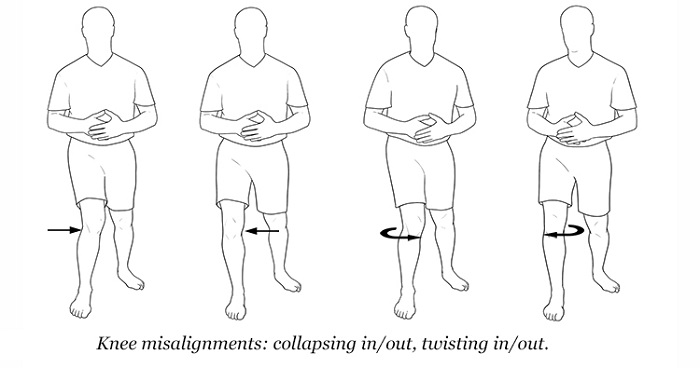
Each of these misalignments places uneven forces into the knee joint. If the forces are strong enough, they can cause injury to a healthy knee.
For a knee with OA, these forces can cause more pain and accelerate the breakdown of cartilage and other tissue. Not good!
By maintaining the Two Fundamental Knee Alignments while shifting weight and rotating the hips, you will avoid places uneven pressures into your knees, helping protect them from further damage.
Learning how to maintain knee alignments provides you the foundation for restoring knee health and eliminating pain through the low-impact, yet powerful exercise called Tai Chi.
It Takes Training and Practice
My experience is that most people with knee issues do not maintain knee alignments, especially when shifting weight or turning their hips, even when it hurts their knees.
For nearly everyone, it takes practice and training. Like I said above, most exercise training does not emphasize proper knee alignments.
My Tai Chi for Knee Health program includes progressive exercises to help you develop the sensitivity and skill to maintain knee alignments. First while standing, then through increasingly dynamic movements.
Interested in Tai Chi for Knee Health? Here are two resources:
Tai Chi for Knee Health: Exercise System for Eliminating Knee Pain
by Chris Cinnamon
“[…] A must-read for orthopedic specialists and anyone struggling with knee pain.” — Paul G. Fendos, Jr., PhD, author of Taiji as Moving Meditation: Fundamental Principles and Practices
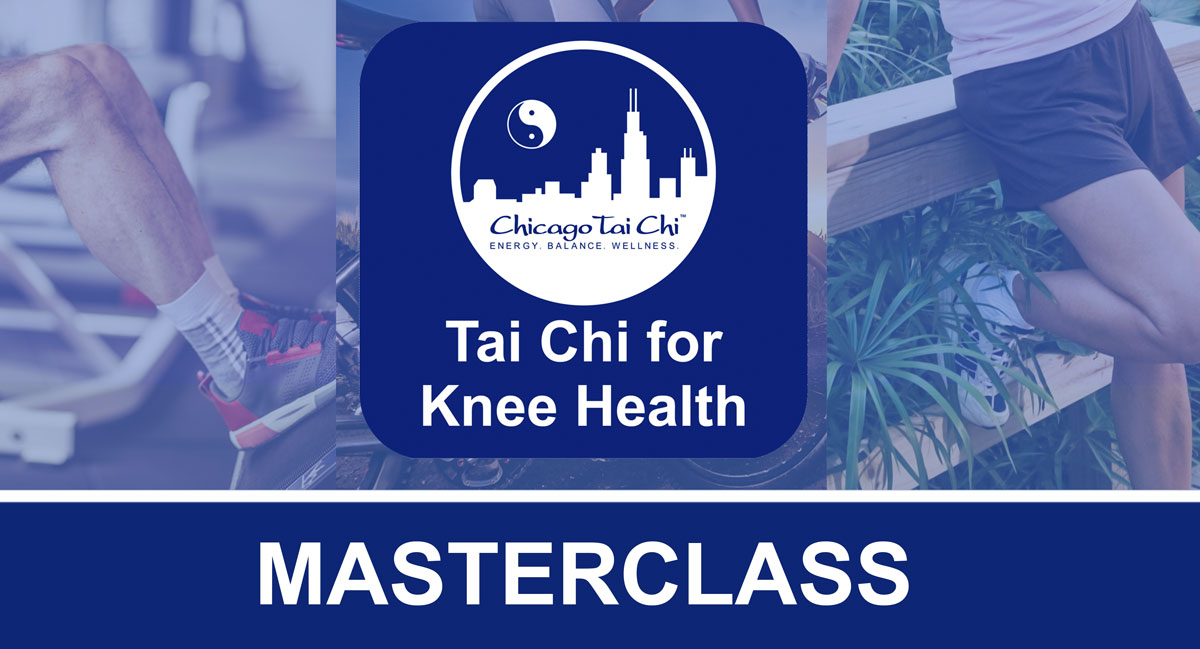
Want to Get Started Today? Join my Tai Chi for Knee Health Masterclass Online Course
For Course Details and to Purchase Immediate Access, click the button below
Wrap-up
A quick summary of big points:
- For people with chronic knee pain, research shows it's OK to engage in low-impact, therapeutic exercise, and Tai Chi is especially beneficial for people with knee OA.
- Learning the Two Fundamental Knee Alignments provides is a key to unlocking how Tai Chi transforms knee health and eliminates knee pain.
- The Two Fundamental Knee Alignments are: (i) Knee Over the Foot; and (ii) Kneecap Aligned with the Toes.
- For nearly everyone, maintaining the Two Fundamental Knee Alignments takes training and practice.
It's worth it. I can tell you first hand, life is better without chronic knee pain!
I wish you the best on your path toward healthy, pain-free knees!
If you found this article helpful, please share it. I welcome your comments and questions below. Thank you!
Chris Cinnamon, JD, MS, CEP
ACSM Certified Exercise Physiologist
Head Instructor
Chicago Tai Chi
"I am passionate about helping people discover how to move their bodies, clear their minds, and enjoy vibrant good health. I specialize in therapeutic applications of Tai Chi and related practices and am the author of the new book Tai Chi for Knee Health: The Low-Impact Exercise System for Eliminating Knee Pain."
For the illustrations in this article, I thank the super-talented biomedical illustrator Elizabeth Moss, www.emoss-illustration.com.
Copyright by Chicago Tai Chi LLC. Illustrations or other material from this article may not be reproduced or otherwise used without the express written consent of Chicago Tai Chi LLC.
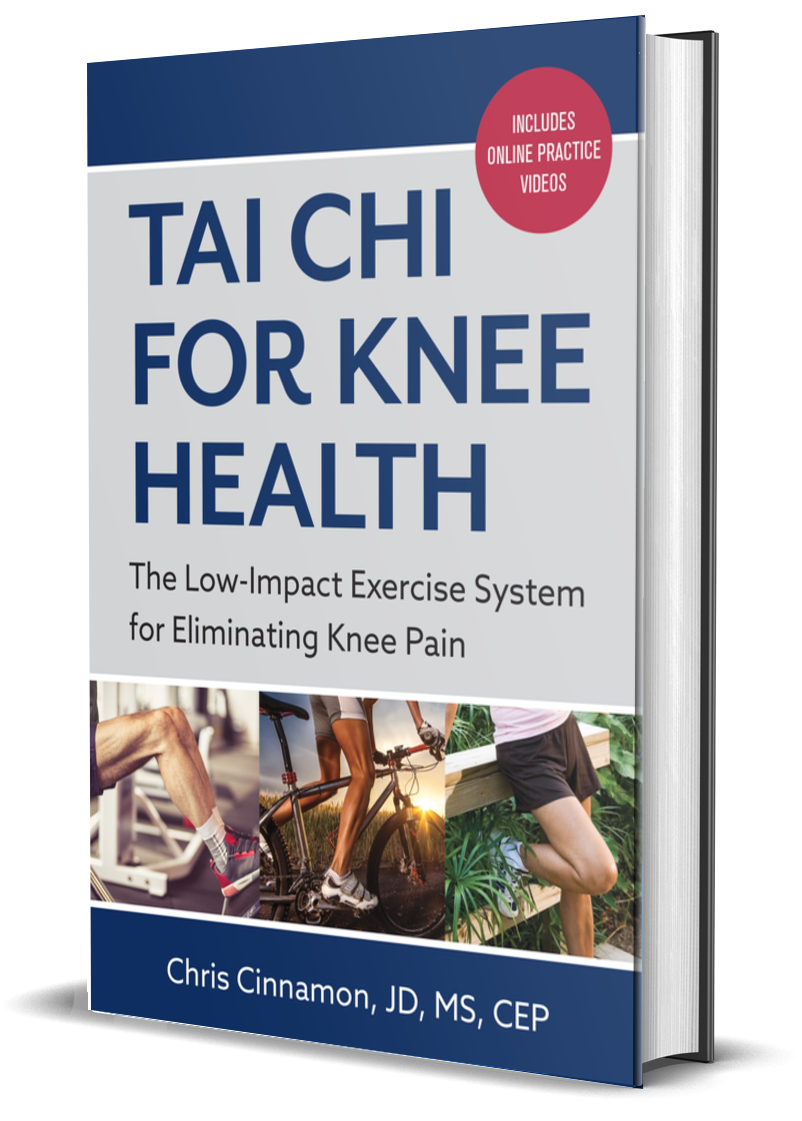
Interested in reviewing the research on Tai Chi and Knee OA? Here’s some citations to get you started.
References
Brismeé, Jean-Michel, Robert L. Paige, Ming-Chien Chyu, Julie D. Boatright, Joseph A. McCaleb, Mauricio M. Quintela, Du Feng, Ke T. Xu, and Chwan-Li Shen. “Group and Home-Based Tai Chi in Elderly Subjects with Knee Osteoarthritis: A Randomized Controlled Trial.” Clinical Rehabilitation 21, no. 2 (February 2007): 99–111.
Chu, Constance R., and Thomas P. Andriacchi. “Dance between Biology, Mechanics, and Structure: A Systems-Based Approach to Developing Osteoarthritis Prevention Strategies.” Journal of Orthopaedic Research 33, no. 7 (July 1, 2015): 939–47. https://doi.org/10.1002/jor.22817.
Felson, D. T. “Osteoarthritis as a Disease of Mechanics.” Osteoarthritis and Cartilage / OARS, Osteoarthritis Research Society 21, no. 1 (January 2013): 10–15. https://doi.org/10.1016/j.joca.2012.09.012.
Kang, Jung Won, Myeong Soo Lee, Paul Posadzki, and Edzard Ernst. “T’ai Chi for the Treatment of Osteoarthritis: A Systematic Review and Meta-Analysis.” BMJ Open 1, no. 1 (March 28, 2011). https://doi.org/10.1136/bmjopen-2010-000035.
Kong, Ling Jun, Romy Lauche, Petra Klose, Jiang Hui Bu, Xiao Cun Yang, Chao Qing Guo, Gustav Dobos, and Ying Wu Cheng. “Tai Chi for Chronic Pain Conditions: A Systematic Review and Meta-Analysis of Randomized Controlled Trials.” Scientific Reports 6 (April 29, 2016): 25325. https://doi.org/10.1038/srep25325.
Lauche, R., J. Langhorst, G. Dobos, and H. Cramer. “A Systematic Review and Meta-Analysis of Tai Chi for Osteoarthritis of the Knee.” Complementary Therapies in Medicine 21, no. 4 (August 2013): 396–406. https://doi.org/10.1016/j.ctim.2013.06.001.
Lee, Hwa-Jin, Hi-Joon Park, Younbyoung Chae, Song-Yi Kim, Seung-Nam Kim, Seung-Tae Kim, Je-Ho Kim, Chang-Shik Yin, and Hyejung Lee. “Tai Chi Qigong for the Quality of Life of Patients with Knee Osteoarthritis: A Pilot, Randomized, Waiting List Controlled Trial.” Clinical Rehabilitation 23, no. 6 (June 2009): 504–11. https://doi.org/10.1177/0269215508101746.
Li, Yan, Kuan Wang, Lejun Wang, Tongbo Chang, Shengnian Zhang, and Wenxin Niu. “Biomechanical Analysis of the Meniscus and Cartilage of the Knee during a Typical Tai Chi Movement-Brush-Knee and Twist-Step.” Mathematical Biosciences and Engineering: MBE 16, no. 2 (30 2019): 898–908. https://doi.org/10.3934/mbe.2019042.
Quicke, J. G., N. E. Foster, M. J. Thomas, and M. A. Holden. “Is Long-Term Physical Activity Safe for Older Adults with Knee Pain?: A Systematic Review.” Osteoarthritis and Cartilage / OARS, Osteoarthritis Research Society 23, no. 9 (September 2015): 1445–56. https://doi.org/10.1016/j.joca.2015.05.002.
Shen CL, James CR, Chyu MC, Bixby WR, Brismée JM, Zumwalt MA, and Poklikuha G. “Effects of Tai Chi on Gait Kinematics, Physical Function, and Pain in Elderly with Knee Osteoarthritis – a Pilot Study.” American Journal of Chinese Medicine 36, no. 2 (May 2008): 219-232 14p.
Solloway, Michele R., Stephanie L. Taylor, Paul G. Shekelle, Isomi M. Miake-Lye, Jessica M. Beroes, M. Roberta Shanman, and Susanne Hempel. “An Evidence Map of the Effect of Tai Chi on Health Outcomes.” Systematic Reviews 5 (2016): 126. https://doi.org/10.1186/s13643-016-0300-y.
Song, Rhayun, Eun-Ok Lee, Paul Lam, and Sang-Cheol Bae. “Effects of Tai Chi Exercise on Pain, Balance, Muscle Strength, and Perceived Difficulties in Physical Functioning in Older Women with Osteoarthritis: A Randomized Clinical Trial.” The Journal of Rheumatology 30, no. 9 (September 1, 2003): 2039–44.
Tsai, Pao-Feng, Jason Y. Chang, Cornelia Beck, Yong-Fang Kuo, and Francis J. Keefe. “A Pilot Cluster-Randomized Trial of a 20-Week Tai Chi Program in Elders With Cognitive Impairment and Osteoarthritic Knee: Effects on Pain and Other Health Outcomes.” Journal of Pain and Symptom Management 45, no. 4 (April 2013): 660–69. https://doi.org/10.1016/j.jpainsymman.2012.04.009.
Wallace, Ian J., Steven Worthington, David T. Felson, Robert D. Jurmain, Kimberly T. Wren, Heli Maijanen, Robert J. Woods, and Daniel E. Lieberman. “Knee Osteoarthritis Has Doubled in Prevalence since the Mid-20th Century.” Proceedings of the National Academy of Sciences 114, no. 35 (August 29, 2017): 9332–36. https://doi.org/10.1073/pnas.1703856114.
Wang, Chenchen, Christopher H. Schmid, Patricia L. Hibberd, Robert Kalish, Ronenn Roubenoff, Ramel Rones, and Timothy McAlindon. “Tai Chi Is Effective in Treating Knee Osteoarthritis: A Randomized Controlled Trial.” Arthritis and Rheumatism 61, no. 11 (November 15, 2009): 1545–53. https://doi.org/10.1002/art.24832.
Wang, Chenchen, Christopher H. Schmid, Maura D. Iversen, William F. Harvey, Roger A. Fielding, Jeffrey B. Driban, Lori Lyn Price, et al. “Comparative Effectiveness of Tai Chi Versus Physical Therapy for Knee Osteoarthritis: A Randomized Trial.” Annals of Internal Medicine, May 17, 2016. https://doi.org/10.7326/M15-2143.
Yan, Jun-Hong, Wan-Jie Gu, Jian Sun, Wen-Xiao Zhang, Bao-Wei Li, and Lei Pan. “Efficacy of Tai Chi on Pain, Stiffness and Function in Patients with Osteoarthritis: A Meta-Analysis.” PLoS ONE 8, no. 4 (April 19, 2013). https://doi.org/10.1371/journal.pone.0061672.
Ye, Jiajia, Shufang Cai, Weihong Zhong, Shuhe Cai, and Qikai Zheng. “Effects of Tai Chi for Patients with Knee Osteoarthritis: A Systematic Review.” Journal of Physical Therapy Science 26, no. 7 (July 2014): 1133–37. https://doi.org/10.1589/jpts.26.1133
Hi Chris
I was looking around your website as I am interested in exploring Tai Chi or Qigong and I came across this article. My own knee problems relate very much to the fact that I overpronate my feet with fallen arches.
So I was wondering if these sort of exercises can achieve correct knee alignment even when the feet are misdirecting the Tibia at ground level?
Thanks
Greetings Helen,
Thanks for your interest in Tai Chi for Knee Health.
You have already taken an important step toward transforming your knee health— identifying misalignments.
The next step is to discover how to correct those alignments.
My Tai Chi for Knee Health System guides you through a step-by-step systematic program to develop the sensitivity and skill to correct knee alignments and maintain those corrections during increasingly dynamic movement.
I suggest you check it out.
For more information, click https://www.chicagotaichi.org/tai-chi-for-knee-health-the-book/
Hello Chris,
I have patellar tilt (weak VMO muscle , tight VL muscle) in both knees (since past 10 years) plus uneven hips and shoulders.
I am just 35 but my muscles are like loose flabby…
I tried everything physio, chiro, postural training but nothing seem to give optimal results…
Can you please inform if Tai Chi can cure my condition??
Thanks,
Nicky
Greetings Nicky,
Based on your description, I would encourage you to explore my Tai Chi for Knee Health program. It emphasizes precise knee alignments and includes exercises that can help address the imbalances you describe.
Please let me know how it goes!
Best,
Chris Cinnamon
Thank you Chris for your answer.
I know a book written by you for knee health. It’s available online. If I go for the book, will it be enough for me to cure my condition?
Thanks,
Nicky
Greetings Nicky,
Thank you for your interest in my book Tai Chi for Knee Health. The Tai Chi for Knee Health System has helped people around the globe transform their knee health.
You ask if the book will be enough to cure your condition. In any specific case, it would be unwise to make an absolute assurance. As with any therapeutic process, there is variability in results achieved. For example, no competent medical doctor would 100% guarantee the results of a treatment for chronic pain on any specific individual.
That said, by following the Tai Chi for Knee Health program, you will gain the skill and sensitivity to precisely align your knees, stop moving in ways that hurt your knees, and you will learn a Tai Chi-based exercise set that can improve knee health.
I encourage you to give it a go and evaluate your results. Keep me posted!
Best,
Chris Cinnamon
Great Chris,
Thank you for your detailed answer.
I really appreciate it.
Most certainly I will follow your advice.
Thanks again..
Thanks,
Nicky
Pingback: Is Tai Chi Good For Bad Knees?